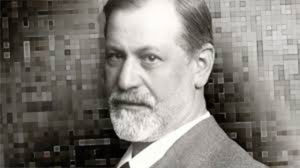Les métamorphoses de « la folie privée » : enjeux cliniques
Résumé
Partant de la problématique des « états-limites », l’auteur se centre sur ce qu’A. Green nommait « folie privée », cette logique primaire teintée de toute puissance, héritière de l’histoire archaïque du patient, qui débouche sur de fortes « convictions » difficiles à déloger. Il faut un temps considérable pour que cette logique s’apaise et que le patient accède à une conviction plus secondarisée issue du travail de construction en analyse. Ceci ne peut se faire que conjointement à l’acquisition d’un moi plus solide qui devrait favoriser chez le patient aussi bien le sentiment d’exister en continu dans la tête de l’ «autre», que celui de la permanence de l’objet.
Samenvatting
Vertrekkend van de psychische problematiek van borderline patiënten zoemt de auteur vooral in op wat A. Green de ‘private waanzin’ noemde, slaand op een primaire logica gekleurd door omnipotentie. Deze logica vindt haar oorsprong in de archaïsche geschiedenis van de patiënt en genereert sterke overtuigingen die moeilijk te doorbreken zijn. Er is veel tijd nodig om deze logica te verzachten, laat staan om de patiënt toegang te laten krijgen tot een meer ‘gesecondariseerde’ overtuiging, resultaat van een werk van constructie in de analyse. Dit kan alleen maar gebeuren in samenhang met het verwerven van een meer solide ik dat bijdraagt tot een gevoel van continuïteit van bestaan in het hoofd van de ander en van het bereiken van objectconstantie.
Summary
Examening acute psychic problems of borderline patients, the author centers her attention on what André Green called “private madness”, which refers to a primary logic, coloured by omnipotence, originating in the archaic history of the patient and which generates strong “convictions” difficult to eliminate. A very long time is needed to diminish and eventually transform such logic into a more secondary conviction resulting from the work of construction in analysis. This cannot be accomplished without the patient’s progressive acquisition of a more solid ego, which in turn might favour a feeling of “continued existence” in his object’s mind, combined with the acknowledgment of the permanence of the objet.





